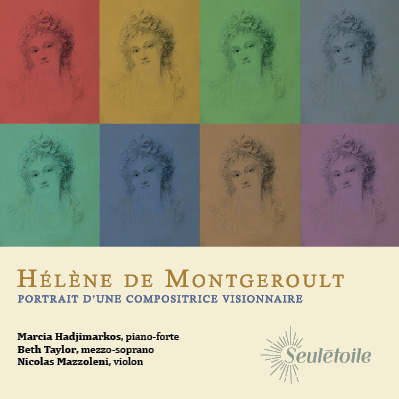

Études, Nocturnes & Sonata by Hélène de Montgeroult with Beth Taylor (mezzo soprano) & Nicolas Mazzoleni (violin), on a square piano by Neuhaus, Paris 1817, restored by Matthieu Vion.
“The etudes are touching miniatures that foreshadow Romanticism. Marcia Hadjimarkos’ clear enunciation, her sensitive phrasing, and the variety of her registration – the ‘celeste’ with its subtle halo, the dramatic atmosphere lent by the ‘basson’, the cheeky ‘lute’ – add relief to these pages .Beth Taylor’s ardent timbre and Nicolas Mazzoleni’s rather delicate tone accompany her on this many-hued journey.” Diapason
Available in France on the Seulétoile website, and everywhere on downloading/streaming platforms.
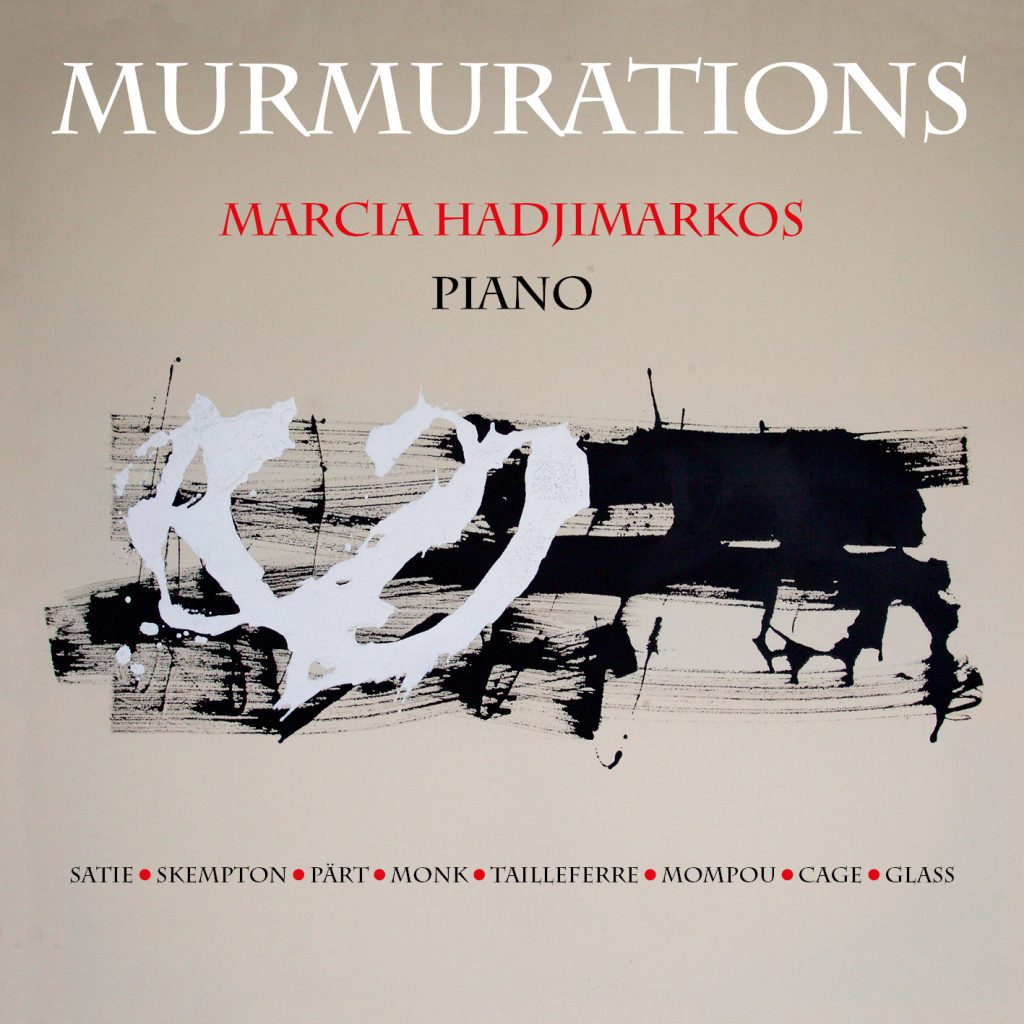
Minimalist music by Satie, Skempton, Pärt, Monk, Tailleferre, Mompou, Cage & Glass, on a Steinway B built in 1889.
“Lovingly played, with deep sensitivity to the expressive content. Marcia’s intentionality of programming adds so much to my enjoyment of her album. The sound she achieves from her piano is reflective of her training and experience. There is a clarity and delicacy of touch that I find so often in recordings on early keyboard instruments, and I suspect (her background) infuses (her) sound…this is an album to which I am sure to return many times, and I extend to readers with any interest in solo piano performance my highest recommendation. And the excellent sound quality of the recording is simply the cherry on top of this engaging album. It is a pure sound, and a pure delight to hear.” Positive Feedback
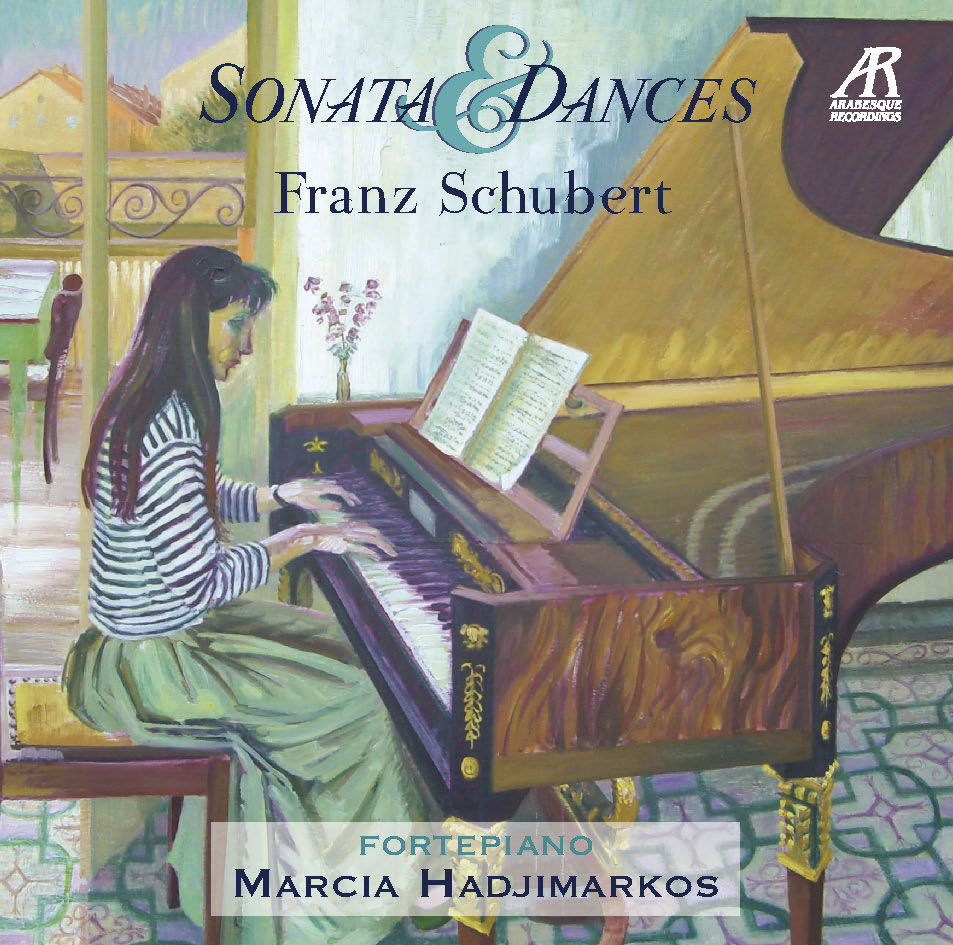
Schubert’s Sonata D850 in D major and two sets of German dances on a fortepiano after Fritz (1814) by Christopher Clarke.
“Here is another example of how everything Marcia Hadjimarkos touches turns to gold. In several live performances and in recordings, she has never failed to delight and entertain this reviewer. Her performances are always stylish and interesting, with seemingly effortless technical facility, albeit always at the service of the music. This recording is no exception.” Historical Keyboard Society of North America Newsletter
“The playing delivers Schubert’s extroverted grandeur, light-hearted delight and gentle melodies with Viennese grace and charm. (…) The accompanying liner notes are poetically delivered. (…) Hadjimarkos is a facile and exuberant player who knows her instrument well.” Harpsichord & Fortepiano
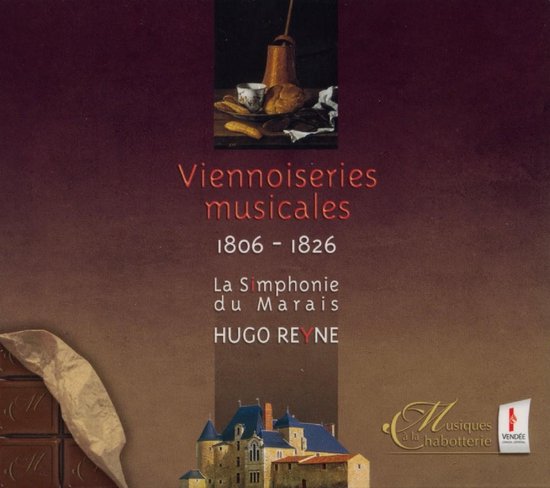

La Simphonie du Marias, Hugo Reyne, (csakan – Hungarian flute-cane), Marcia Hadjimarkos (fortepiano), P. Couvert & Frank Pichon (violin), S. Raban (viola), D. Dujardin (cello).
“The originality, the sprit and the humour of this project are not at all surprising, coming as they do from the founder of the Simphonie du Marais. This disc is more of the spirit than of the letter, giving the slightly frivolous pleasure of discovering an instrument as improbable as it was ephemerous, and which provides a previously unheard echo of Biedermaier Vienna” Diapason
“More so than the csakan, the revelation of this CD is the fortepiano. The use of the bassoon stop, and particularly of the “Turkish music”, create such an enormous surprise that those who don’t mention it have probably not listened to the recording.” Classiqueinfo-disque.com
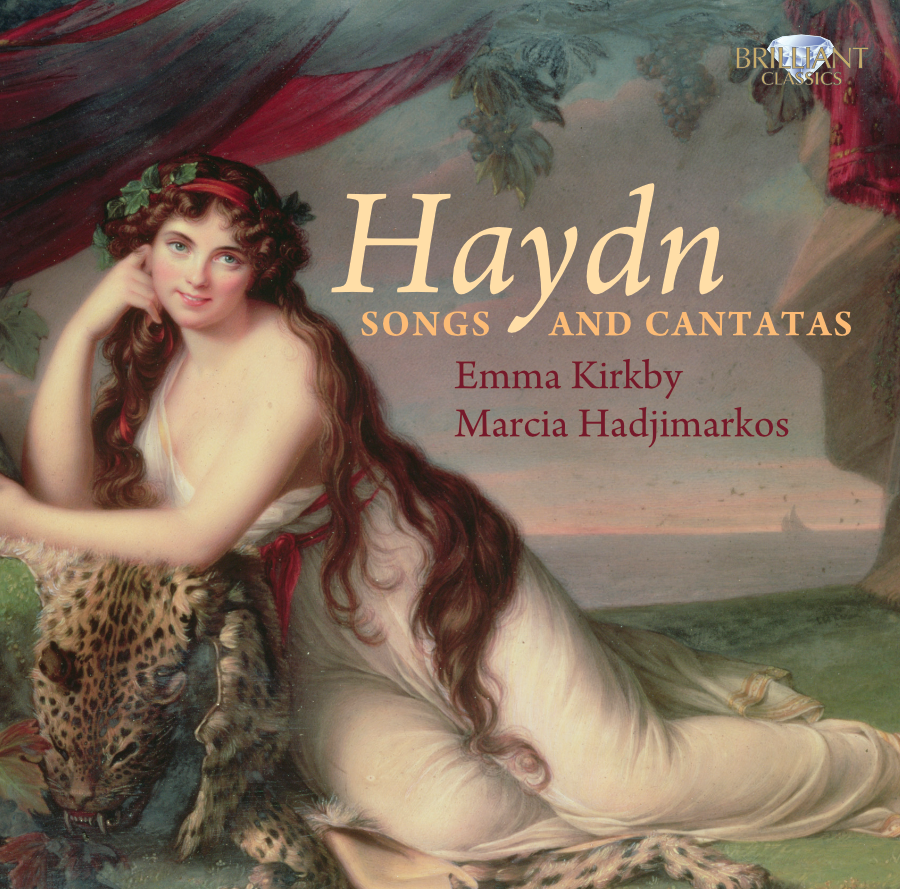

Haydn canzonettas and arias with Emma Kirkby, fortepiano after Walter by Christopher Clarke.
“Marcia Hadjimarkos skilfully conveys the range of colours and intricacies in Haydn’s piano accompaniments. (…) The instrument features levers operated by the hand or knee to provide distinctive special sonorities, such as the “bassoon” stop (…) used sparingly to fine effect in “The Battle of the Nile.” Gramophone“…Such refinement at every turn.(…) Marcia Hadjimarkos coaxes from her Walter fortepiano copy an array of sensual, subtle colors as well as effects reminiscent of a small orchestra (…)Dame Emma’s longevity and poetic intelligence are staggering.” Diapason



Three sonatas and three rondos on a fortepiano after Lengerer (1793) by Christopher Clarke.
“Beyond the wondrous sensitivity of her touch, two elements of Hadjimarkos’s playing stand out: her very flexible approach to tempo, and her witty, sometimes daringly profuse and yet always idiomatic ornamentation. In short this is the most satisfying recording of Mozart on the fortepiano I have heard for some years. More please, and as soon as possible!” Goldberg
“Those with an ear for the manifold beauties of the instrument that Mozart knew and loved are not likely to find more imaginatively realized, full-blooded or loving readings than these presented by Marcia Hadjimarkos. Very highly recommended.” Fanfare
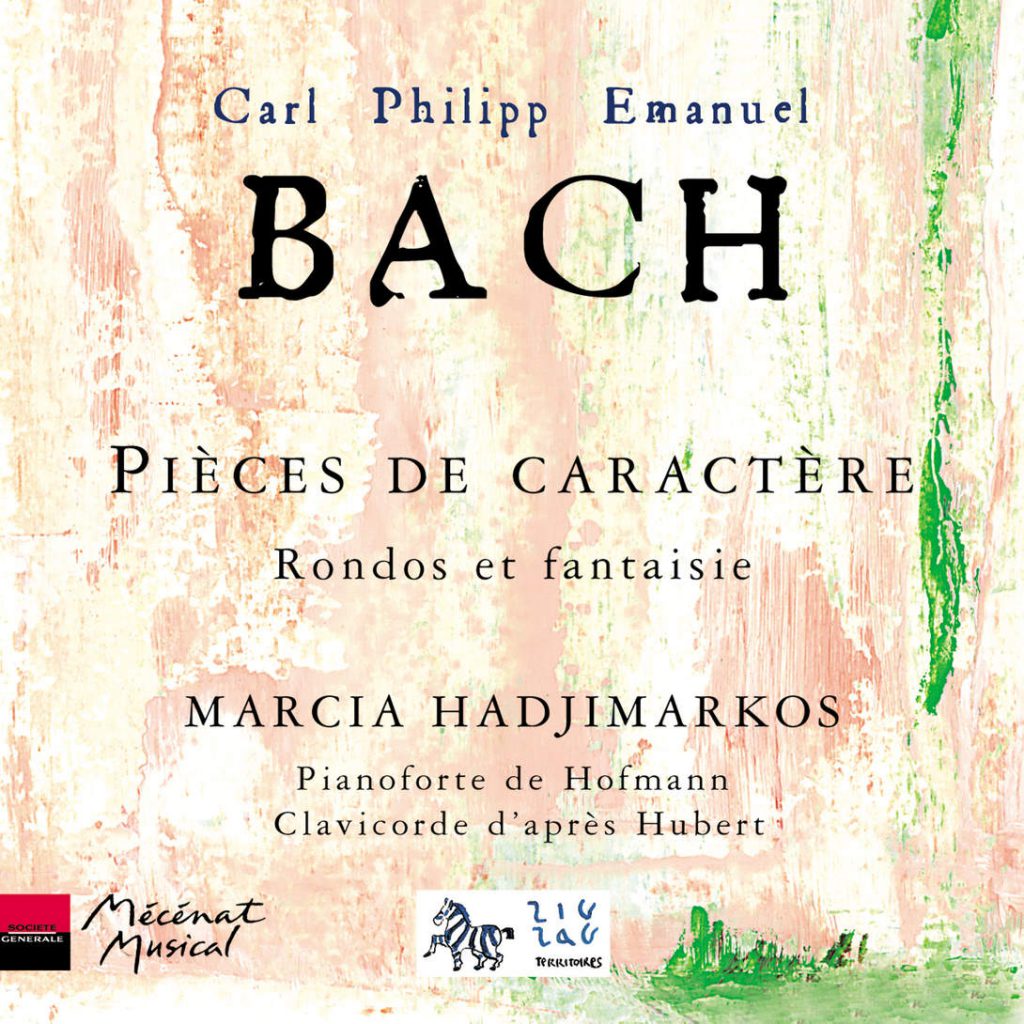


Character pieces, two rondos and a fantasy by C.P.E. Bach on a clavichord after Hubert (1772) by Thomas Steiner and a piano by Ferdinand Hoffmann (c.1790).
“Ms Hadjimarkos”s playing is superb throughout: dynamic, free and powerfully shaped. One hopes that she will keep recording C.P.E. Bach’s music; she does it as well as any keyboardist now playing.” Fanfare
“The talented Marcia Hadjimarkos lacks neither taste nor finesse.” Télérama
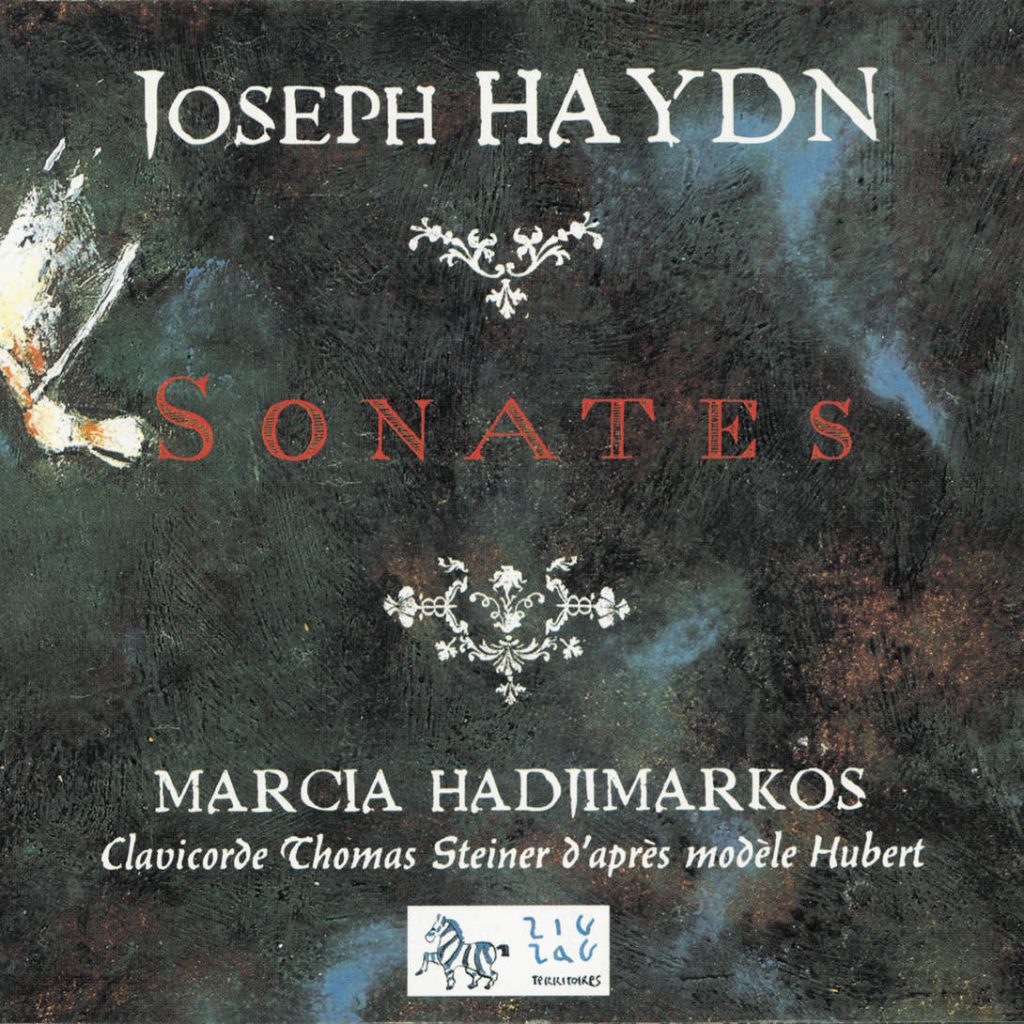


Six Sonatas by Haydn on a clavichord after Hubert (1772) by Thomas Steiner.
“This recording cannot be compared with any other. Unsettling clavichord! Marcia Hadjimarkos reveals in her staggering variety of touches, timbres and nuances the magical combination that allows unexpected eloquence to spring from the text.” Diapason
“This is a revelatory CD, extending the scope of the clavichord beyond my dreams. (…) She pays with boundless energy and virtuosity, taking risks (but never tumbling) at breakneck tempi, on an instrument which is notoriously difficult to manage.” British Clavichord Society Newsletter
